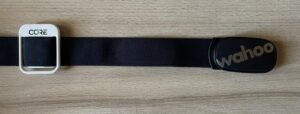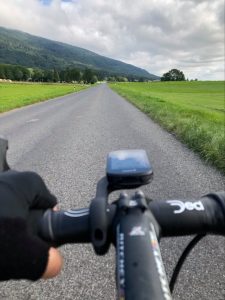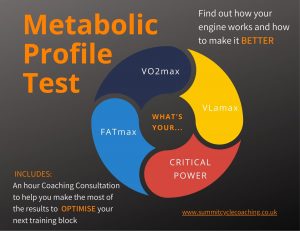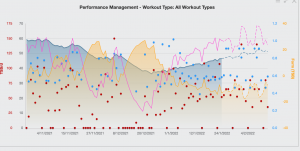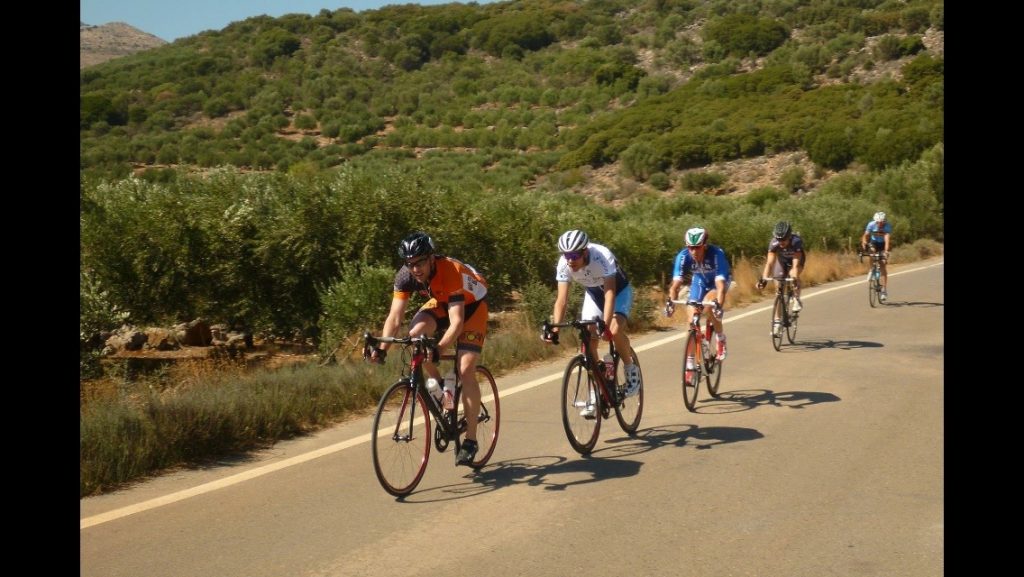Understanding Heat Training
Given the recent heatwave, the high temperatures in both the men’s and women’s Tour de France and some really high temps in the tour of Switzerland (which I experienced directly as it was not far from where I live!!)
It seems like a good time to discuss heat, what it does to your performance, how to train/adapt to it and how to manage your temperature when it is hot.
How Do High Temperatures Affect Performance?
Short answer…a lot!! I’m not talking about heat illnesses here, I’m not a doctor, and you don’t want to go anywhere near these very serious conditions. However, way before you get to those, performance is massively affected!
The research on exactly how much varies, and though everyone will react somewhat differently, the research consistently shows decreased performance in the heat.
The way it affects you can also vary, but the research has shown it can affect your cardiovascular system, nervous system, immune system and results in premature fatigue.
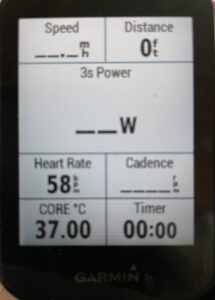
The first time I really became aware of this issue was when watching the Ironman world Champs in Kona. If you are not used to those conditions and don’t have a very good plan and a good adaptation protocol, it’s going to be rough!!
When you exercise, your body has to deal with the excess heat; it doesn’t need to maintain a stable core temperature. One of the biggest/most immediate issues, when you exercise in the heat is that your body has to deal with a lot more heat…it has to get rid of it!! So it prioritises this over the exercise, using more blood flow to help keep you cool. This means less blood for your muscles, therefore, less power…essentially, you have a lower VO2max. No wonder performance decreases!!
Without acclimatising to the heat, performance will, without a doubt, be lower. But on a positive note, the studies also show that you can acclimatise to performing in the heat.
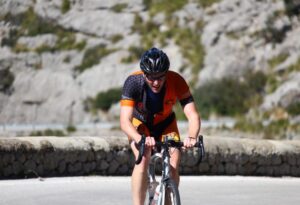
How do I Adapt to the Heat?
In simple terms, training in the heat will help you perform in the heat. But it’s not really as simple as that…what if you live in a cool climate and your race is in a different, much hotter climate? My brother did an Ironman a few years ago, and just before it became clear that they would be having much higher than normal temperatures on race day…there wasn’t much time for adaptive training, but cooling and pacing strategies had to be looked at closely.
What are my options for heat training?
These are options that you can look into…I haven’t got enough room to share all the protocols, but do your research and consult a professional for safety, help and advice.
- Training in warm conditions (either hot country or artificially with warm room on the turbo)
- Getting into a sauna post-workout
- Getting in a warm bath after your workout
- Wearing extra layers
A word of caution…you don’t want to mess around with heat training without knowing what you are doing…I do my own research and monitor my core temperature with the CoreBodyTemp device…In my opinion, it’s fairly pointless doing something without being able to measure what you are doing. Health is not something to guess about, so the feedback from the Core helps keep me safe and shows me when my training has been effective.
I’m not going to lie…heat training is not the most comfortable thing to do…and it does get a bit messy if, like me, you have to use the extra clothes/no fans on the turbo method!!
There are loads of protocols out there, so you should be able to find one that suits you and the equipment you have available. Core have a ramp test you can do to find your heat training zone and then you can spend time in that to help adapt and there’s loads of great advice on their blog.
One of the primary adaptations to heat training is an increase in blood plasma, meaning you have more blood volume…gets some of that VO2max back for you 🙂
Managing Heat During your Race
Hopefully, you’ve managed to adapt as much as you can before the race…however, you still need to keep your core temperature optimal during the race, here are some ideas.
Strategies include:
- Pouring water on yourself to aid evaporative cooling (less effective if it’s humid)
- back, hands, front of thighs seems particularly effective
- Ice under your cap if you are running
- Ice in a sock down the back of your jersey while cycling
- Managing your intensity.
- No point having an unrealistic power plan if temperatures are too high…you won’t be doing power PB’s so save yourself from yourself and adjust early to save a big problem later on.
- Hydration and electolytes are going to be key:
- Have a plan ahead of time
- Become even more important the longer your event
- Also make sure you stay hydrated before the event…you don’t want to start below your optimal.
Again, this is something that need careful thought and planning. If you are in the middle of an event and didn’t plan, you are trusting to luck that things will work out. With all the hard training you do, making sure the basics are done well in preparation makes it much more likely youo will have a successful and enjoyable event.
Have fun looking in to what will work for you, if you have any questions, feel free to get in touch: coach@summitcyclecoaching.co.uk

